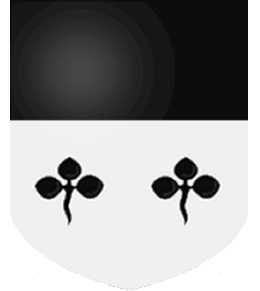
Recte Omnia Duce Deo
RODD |
||||||||||||||||||
The Rodd family owned Trebartha Hall which was part of the Trebartha Estate. They were only the third family to own the estate since the 12th century. The estate came into Rodd ownership in 1729 when Francis Rodd inherited it from his cousin, Mary Grylls, nee Spoure. The Rodd family lived at Trebartha Hall for over two centuries until the estate was sold in 1940.
How the Rodd family came to live at Trebartha Hall1 HerefordshireFrom modest means in Herefordshire the Rodds became one of the influential families in South West England and the following narrative traces their upward social move. If you have read other narratives about this family on other websites or on published family trees, you will notice that this narrative corrects some inaccuracies on those sites. The Rodd family came originally from Presteigne in Herefordshire and a family tree shows ancestors dating back to around 1510; some texts refer to them as an 'ancient family'. They were weavers, tradesmen and millers and generated some local status through some judicious decision making. By taking on the grain mill at Wegnall, near Presteigne, by building their own large home at "The Rodd" and by marrying into the influential Price family, the Rodd family's star was set to rise.
Hugh (born around 1572), lived and worked the local mill at Wegnall. James (born about 1575) was Member of Parliament for Hereford and later became Sir James Rodd of Moreton and Foxley.
2 DevonRichard Rodd of "The Rodd" married around 1600 to the wonderfully named Fridewise Savery. She had been born into the influential Savery family from Totnes in Devon. This family were landed and also had Members of Parliament in their cohort. This marriage proved to be the connection between the Rodd family from Hereford and the south west of England. Richard acquired land and property in and around Totnes to complement his Herefordshire holdings. Upon his death the lands in Hereford were inherited by his son, Richard. The Devon assets passed to another son, James Rodd (born abt 1611).
Within a few years James was once again without a wife as Grace also died and he remarried, this time to Grace's cousin Mary Bampfylde, around 1647. It is likely that James and Mary took up occupation around this time in Bedford House in Exeter (pictured here); this had previously been a royal residence which was considered a safe place to be, given the upheaval of the English Civil War. In 1670 James was High Sheriff of Cornwall. James and Mary had seven children. One of their daughters was named Mary after her mother, who married Edmund Spoure of Trebartha Hall on the 6th October 1675, but more about them below. John and Mary's son, William Rodd, was the ancestor of the branch of the family that settled in Weare (on the Exe Estuary between Exeter and Topsham), Topsham and Doddiscombeleigh. |
||||||||||||||||||
On the wall of St Stephen's Church in Exeter there is a splendid memorial to James and some members of his family. It is surmounted by the Rodd arms, "per fesse sable and argent, in base two trefoils slipped of the first", being impaled with Bampfylde, "or on a bend, gu, three mullets, arg.; crest, a Colossus of Rhodes". The use of the Colossus of Rhodes is purely a play on the similarity of Rhodes with the name Rodd. The inscription reads as follows: |
||
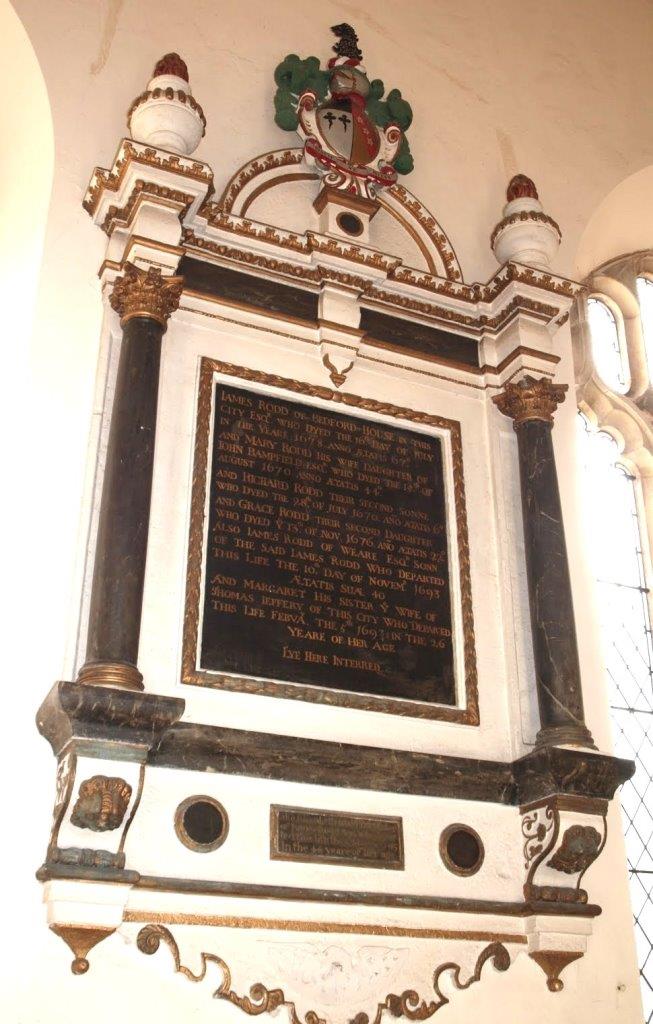 |
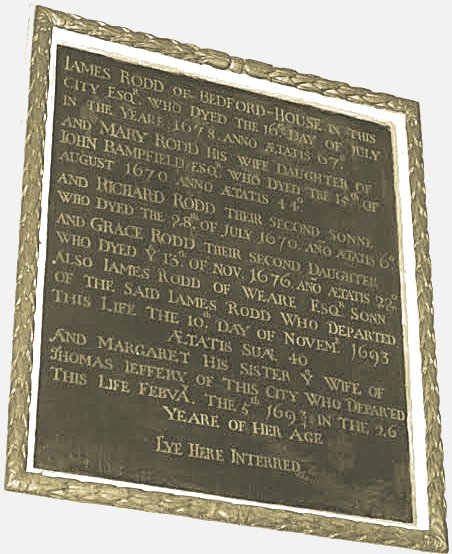 |
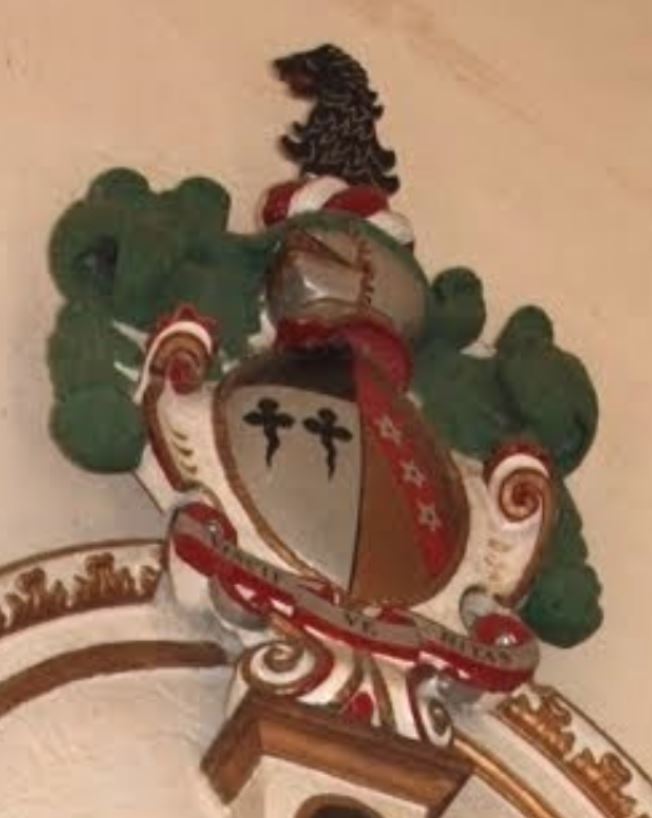 |
"James Rodd of Bedford House in this city Esqr, who died on the 10th day of July, in the year 1678 anno aetatis 67 (images courtesy of http://demolition-exeter.blogspot.com/2010/) |
||
3 The Spoure and Rodd Families' ConnectionJames Rodd had married Mary Hall but no children came from that marriage. This is not on the extract from the Rodd family tree shown above. His second marriage was to Grace Bampfylde, with whom he had a son Bampfylde Rodd. Bampfylde married Bridget Drewe and they had three sons named Bampfylde, Edward and Francis (born 1683). His third marriage was to Grace's cousin, Mary Bampfylde. Four of his children are shown here - Elizabeth, Mary, James and Margaret.
Mary Rodd married Edmund Spoure, who had inherited the Trebartha Estate from his father. Their only surviving child, Mary, married twice. She had a child by each husband but both husbands and both children had died when, as Mary Grylls, she wrote her will after contracting smallpox. In Mary's will (the orange line) she made small bequests to her surviving male cousins but chose to bequeath her considerable Trebartha Estate to her cousin Francis (b1683). Francis' eldest brother, Bampfylde, had died in 1725 and his other brother, Edward, was unmarried; it is possible that Edward was not likely to produce a male heir and for this reason she passed the estate to Francis. Francis was held in high esteem. James Rodd had already passed significant wealth onto his children and this may explain why Mary chose not to grant Trebartha to his sons. It has also been suggested that Mary was engaged to marry Francis and this was the reason why she bequeathed him Trebartha. The evidence to support this comes from the newspaper article mentioned above. It goes on to say: "Now whether he came into Cornwall or the twice widowed Mary Spoure journeyed Devonwards we know not. But the gallant son of Mars and the twice bereaved heiress of Trebartha met ... An attachment sprang up between the cousins. So sincere and well known was it that all the gossips of that time married them, and even the graver historian of the day made up his mind that Mary Spoure-Bellott-Grylls has become Mrs Rodd. But it was not so. When childless Mrs Grylls died. However, the strength of her attachment was proved - she left the valuable manor of Trebartha and all its desirable adjuncts to cousin Francis Rodd, and the younger son of the Rodds of Rodd became the first Rodd of Trebartha". The condition under which Francis was to inherit was, as firmly stated in Mary's will, "provided he is not already married to, or shall not at any time take to wife, Jane Parker, now living in Covent Garden, London." What Mary knew about Jane and why she opposed this marriage has been lost in the mists of time. |
Extract from the will of Mary Grylls nee Spoure
... Behoof of my Kinsman ffrancis Rodd Esqe (Brother
|
||
|
Francis did not marry Jane Parker and thus satisfied the terms of Mary's will. He married Alice Sandford in 1730, probably somewhere near or in Exeter, and they settled down to life at his inherited estate, Trebartha Hall in North Hill. Two pre-nuptial agreements in respect of this marriage are lodged with the Cornwall County Archive as part of the Rodd papers. The marriage settlement listed the property in Devon which he had inherited from his father, and set up a trust for Alice and her family out of lands in Devon and Cornwall to be purchased with her marriage portion of £1,600. The third dynasty to live at Trebartha Hall had commenced and was to last until 1940. |
||
The Rodd Family at Trebartha Hall
Francis Rodd (born 1732) succeeded to his father's estate when he was only four years old. Until he was able to take responsibility for the running of the estate, his mother managed everything. She added considerably to the lands and her hand can be seen on many transactions in the Rodd papers at the Cornwall County Archive. She died, aged about 70, in 1770 and was buried at St Torney's. Click on the image to see the family monument in St Torney's in greater detail. After Francis came of age he took responsibility for the Trebartha Estate and continued to extend the family's portfolio by purchasing land in Altarnun, Lewannick, Linkinhorne and North Hill. He acquired even more valuable property by his marriage in 1763 to Jane Hearle of Penryn. Their marriage settlement lists in meticulous detail all the lands of the Rodd family, viz: those inherited from Mary Spoure; those inherited from Bampfylde Rodd; lands purchased by Francis' father, and by his mother Alice, and lands which he himself had purchased. Jane's property was considerable, including part of the manor of Trelissick in St. Erth and lands in Gwinear, Phillack, Paul, Gwennap, Mabe, Penryn and Stithians. Part of the marriage settlement says that Francis "... is entitled to a considerable Fortune, which will not only be a very eligible and advantageous Match for him, but may ultimately conduce to the Interest of his Sisters". Francis was to pay his sisters £1000 each and the sisters were to release all their rights to any other part of the settlement and legacy. Francis also made his contribution to Cornish and national life. 'Burke's Genealogical and Heraldic History of the Landed Gentry' records him as a magistrate for the county, a Warden of the Cornish Stannaries and as a Colonel of the Royal Cornwall Militia. This sense of duty he appears to have passed on to his children, as will be seen below. Francis and Jane had five children that survived into adulthood - Francis Hearle Rodd (born 1766), Edward Rodd (born 1768), John Tremayne Rodd (born 1769), Jane Rodd (born 1772) and Harriet Rodd (born 1773). Francis' wife, Jane, died in 1780 and he remarried in 1784 to Ann, the daughter of William Sandford of Somerset. A new settlement was drawn up. The marriage was childless. Ann died in 1807 and Francis died in 1812.
- Edward Rodd (Edward's story continues on this page) - John Tremayne Rodd (John's story continues on this page) - Jane Rodd remained a spinster and lived in Exeter until she was 77. - Harriet Rodd married George Sydenham Fursdon of Fursdon in Devon. Their son replaced Edward Rodd as the vicar of Lamerton in 1836 and in 1838 he married his cousin Harriet Grace Rodd who was the daughter of the same Edward Rodd. In 1846 Squire Rodd, of Trebartha, the landowner, built the Church of the Holy Trinity at Bolventor in the sheltered hollow under the New Inn.
|
The Rodd Family Arms - A Question
The question arises as to when the arms first came into existence and what were the rules governing their use? The first known person with the status of knight was James Rodd of Hereford who purchased the title in 1630. He was born about 1575 and it is the descendants of his brother, Richard, who went to live in Devon. Did these arms exist before 1630 and were passed down to James and his brothers and, if so, who was the first person to bear them? The records of Sir James Rodd's descendants do not show them as having inherited his knighthood. Was this a non-hereditary title or did the Act of Parliament that banned the King from using his powers to award knighthoods in return for money prevent later generations from using the title?
|
The image at the top of the page shows the Rodd family arms - Per fesse sable and argent, in base two trefoils slipped of the first.Motto - Recte Omnia Duce Deo [God being my guide all things will be rightly done] |

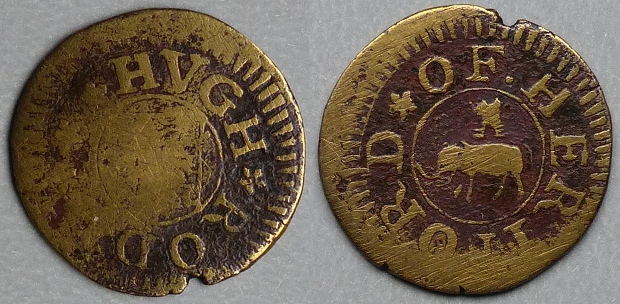 It was Hugh Rodd (c1540-c1603) who created the foundations for the family's fortunes. He married Margaret Price and together they had at least ten children, all of whom appear to have been successful in life. Hugh was sufficiently successful himself to produce his own coinage. A farthing token bearing his name and the elephant & castle is pictured here. Three of his sons are worthy of mention.
It was Hugh Rodd (c1540-c1603) who created the foundations for the family's fortunes. He married Margaret Price and together they had at least ten children, all of whom appear to have been successful in life. Hugh was sufficiently successful himself to produce his own coinage. A farthing token bearing his name and the elephant & castle is pictured here. Three of his sons are worthy of mention.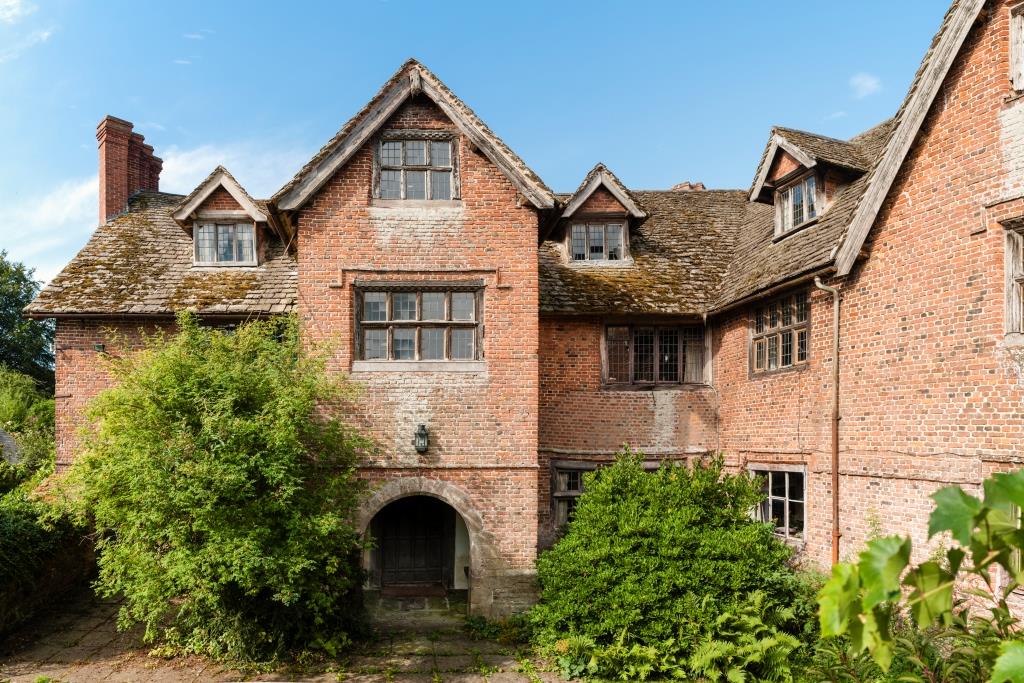 The
The 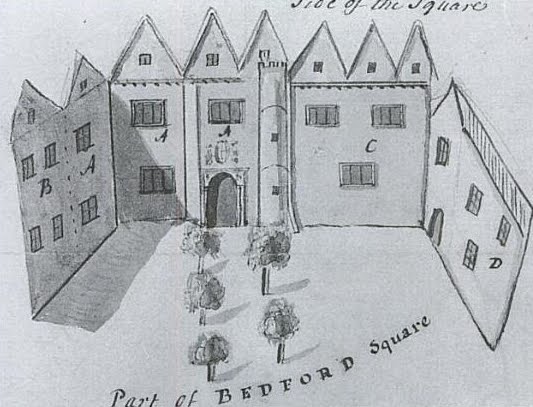 James settled in Devon and added to his property by building or buying
James settled in Devon and added to his property by building or buying 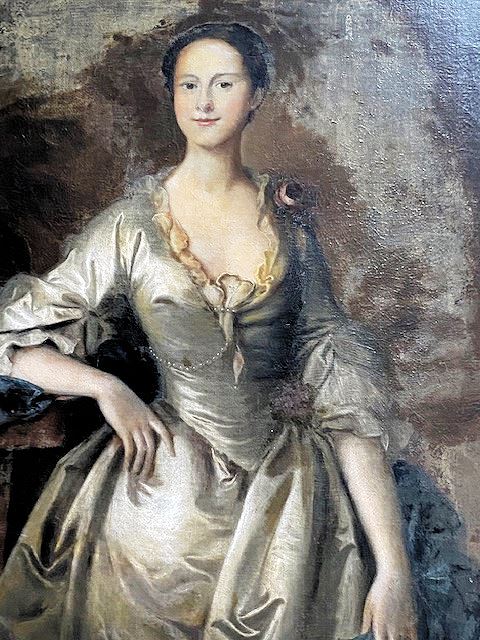
 Elizabeth Rodd died as a spinster in 1704 and the blue line follows the bequests in her will. This image shows part of the copy of the will made at the granting of probate.
Elizabeth Rodd died as a spinster in 1704 and the blue line follows the bequests in her will. This image shows part of the copy of the will made at the granting of probate.
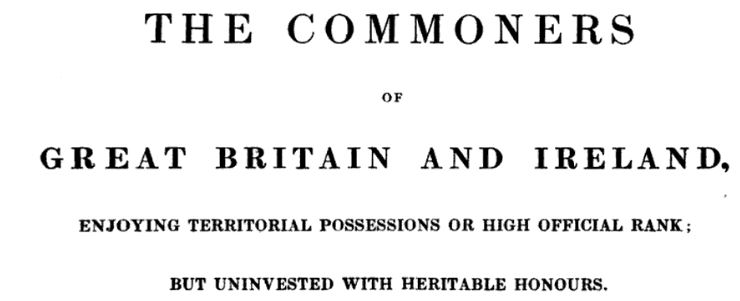 -
- 
 In his book
In his book